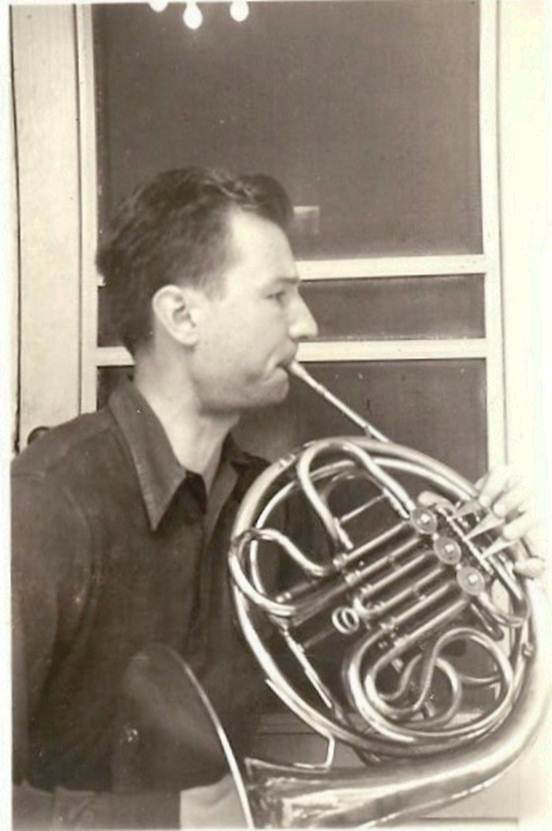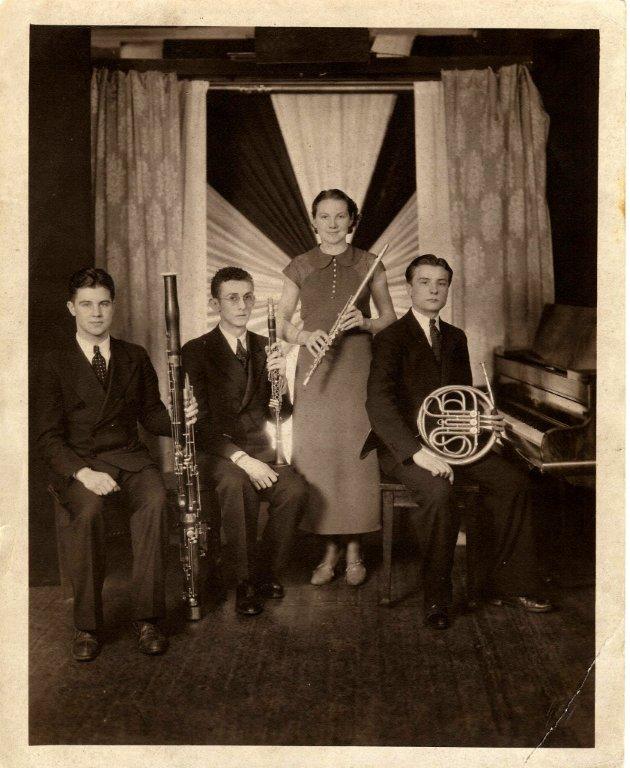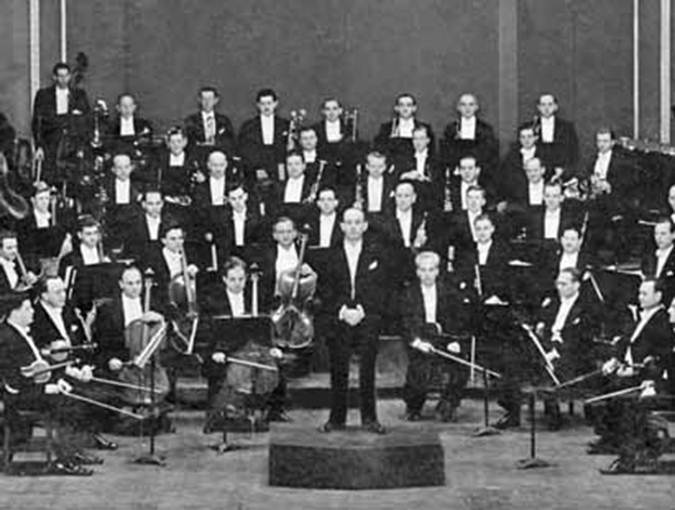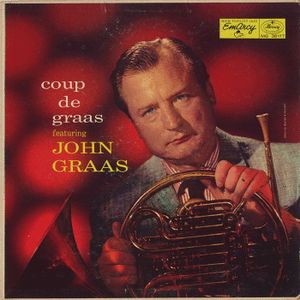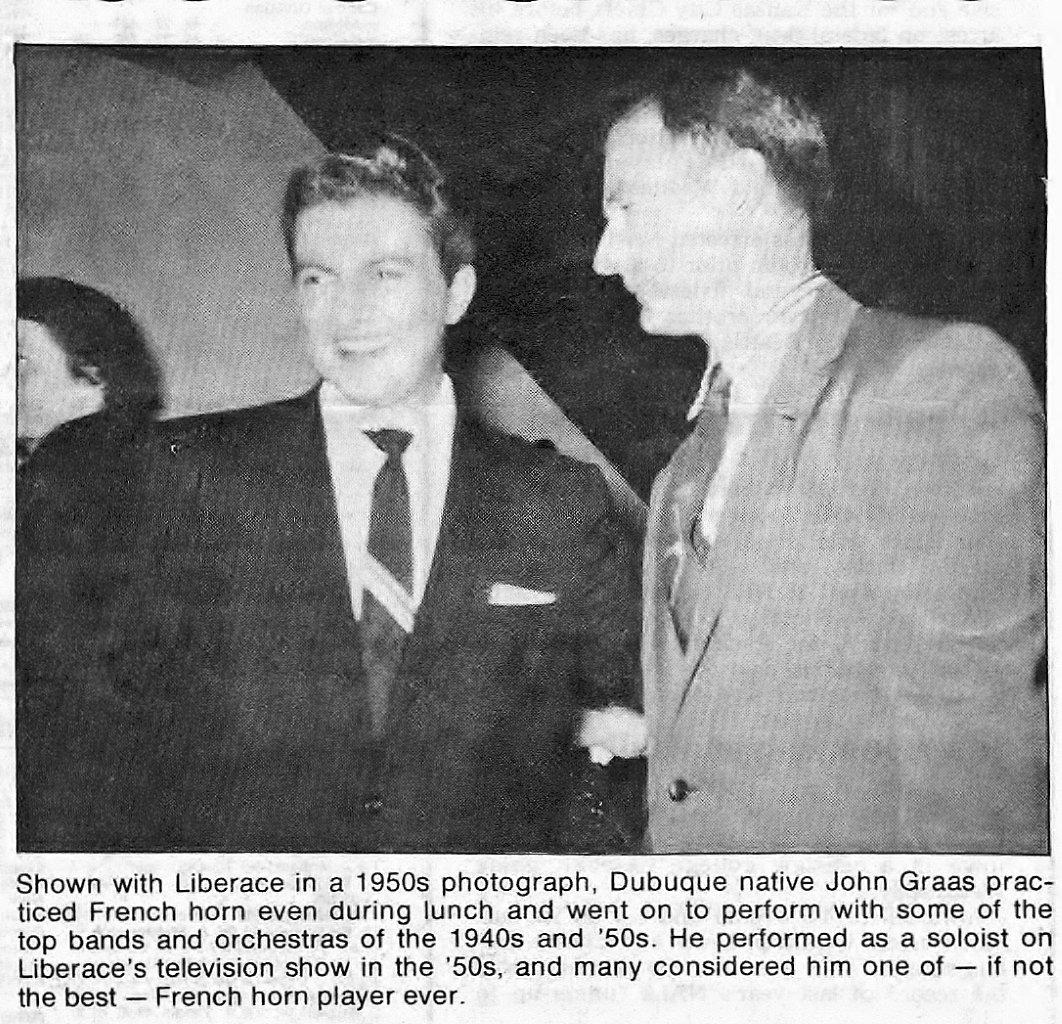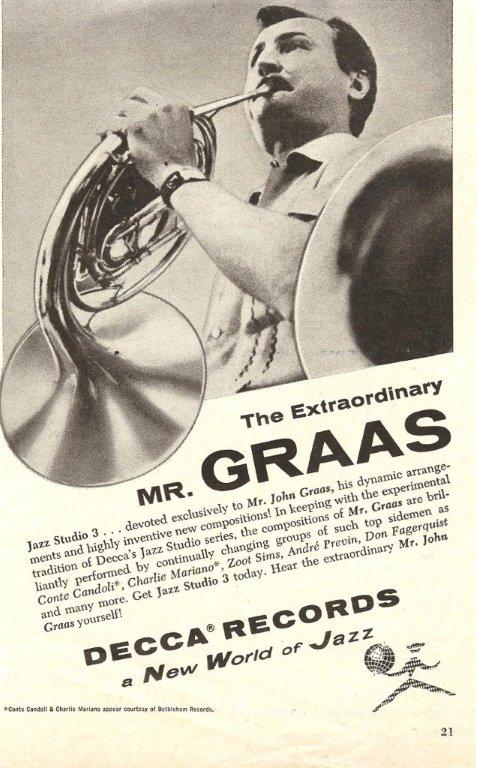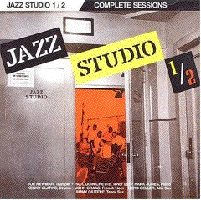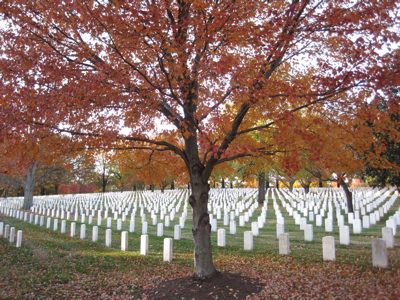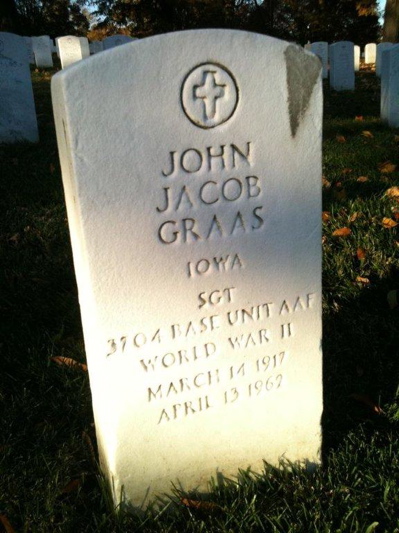Encyclopedia Dubuque
"Encyclopedia Dubuque is the online authority for all things Dubuque, written by the people who know the city best.”
Marshall Cohen—researcher and producer, CNN
Affiliated with the Local History Network of the State Historical Society of Iowa, and the Iowa Museum Association.
GRAAS, John: Difference between revisions
No edit summary |
No edit summary |
||
| (82 intermediate revisions by 2 users not shown) | |||
| Line 1: | Line 1: | ||
Ancestry: https://www.ancestry.com/family-tree/person/tree/7062553/person/152270823482/facts?_phsrc=cbC1194&_phstart=successSource | |||
[[Image:JG.jpg|left|thumb|150px|Senior picture from Dubuque Senior High School. Photo courtesy: [[MCKEEVER, Susan Marie Graas|Susan Marie Graas MCKEEVER]]]]GRAAS, John. (Dubuque, IA, Mar. 14, 1917--Van Nuys, CA, Apr. 13, 1962). Graas was christened John Jacob Graas, Jr. His parents' names were [[APEL, Susan Marie|Susan Marie APEL]] (Birch-second husband) and his father was John Jacob Graas, Sr. His father was born in Luxembourg, as well as his mother's parents, and they emigrated to the United States before settling in Dubuque, Iowa. His mother was a very talented pianist and had perfect pitch. His brother was [[GRAAS, Vincent|Vincent GRAAS]]. | |||
Graas | [[Image:JohnG.jpg|right|thumb|150px|A young John Graas practicing. Photo courtesy: Susan Marie Graas McKeever]] | ||
In 1931 Graas' parents gave their son a French horn while he was a student at [[JEFFERSON JUNIOR HIGH SCHOOL]] and played in the band and orchestra. His musical gift on the instrument appeared quickly. In 1932 at [[DUBUQUE SENIOR HIGH SCHOOL]], he placed first in an elimination contest of musicians and finished third in the state district meet. In 1933 he took first in the district tournament and finished second in the state finals. In 1934, Graas won state and national honors as a French horn musician. He was the only entry in the French horn event to win superior rating. | |||
Graas was impressed with the University of Missouri at Columbia | [[Image:JohnKryl 001.jpg|left|thumb|150px|John Graas with the touring group of Bohumir Kryl. Photo courtesy: Susan Marie Graas McKeever]] | ||
Upon his graduation in 1934, Graas joined the National Musical Ensemble of Minneapolis, Minnesota. In 1935--1936 he joined another touring group, a concert band led by the noted cornet virtuoso and conductor, Bohumir Kryl. Graas returned home in time to play with the Cadet band in their preparation for the Chicago music festival and made the trip with them. Graas received invitations to play with the Houston symphony, the Miami, Florida municipal band, and an offer to be the assistant band director at the University of Nebraska. He turned them down in hopes of becoming a conductor of a major symphony. [[Image:johnwoodwindensemble.jpg|right|thumb|350px|Woodwind ensemble. Photo courtesy: Susan Marie Graas McKeever]] | |||
Graas was impressed with the University of Missouri at Columbia. He enrolled and commuted from Columbia to Chicago to study with Max Pottag of the Chicago Symphony. In June 1940 he received a scholarship to the Tanglewood Camp at the Berkshire Music Center where he played under conductor Serge Koussevitzky and studied there with Willem Valkenier, principal horn with the Boston Symphony Orchestra. | |||
In September 1941 Graas became a member of the Mozart Festival Orchestra, conducted by Thor Johnson. The same month, he received notice of a scholarship to the Julliard School of Music, but a month later turned down the offer to perform as first horn with the Indianapolis Symphony. After one year, he left the orchestra because he was not playing as much as he wanted. Around that time he married Jane Neal, a harp student at Stephens College in Columbia, Missouri. | |||
Graas left classical music for a brief time in May 1942, when he became a member of the Claude Thornhill cool bop big band. He recorded several songs featuring him, including "Buster's Last Stand" and "Lullaby in the Rain" before returning to Tanglewood under Koussevitsky. | |||
[[Image:cleveland.jpg|left|thumb|250px|In 1945 Graas, (far right-2nd row from back), with the Cleveland Orchestra under Eric Leinsdorf. Photo courtesy: Susan Marie Graas McKeever]]He signed a contract in June of 1942 to play principal horn with the Rochester Civic Orchestra to begin in September of 1942. Just before leaving for Rochester, however, he was drafted into the Army in August. | |||
[[Image:johnarmy 001.jpg|left|thumb|250px|Photo courtesy: Susan Marie Graas McKeever]]In the military, Graas spent the most of his time with the 145th Army Ground Forces Band in Virginia. He also saw training at the Army Music School, Fort Meyer, Florida. While there, he was one of several performers asked to perform at the White House for President and Mrs. Franklin D. Roosevelt. Graas played a French horn solo and sang in the school chorus. | |||
Graas expanded his musical background with composing, arranging, and conducting. His earliest known arrangement was "Atlantic Zephyrs" for solo horn with military band accompaniment. His earliest works reflect the influence of Kryl's cornet virtuoso playing. At Camp Pickett, Graas studied improvisation. He graduated as Band Leader from the U.S. Army Music School and finished out service in the Army Air Corps. Graas gained the respect of his fellow servicemen for his playing and musicality and worked with Lloyd Otto, another French horn player at Keesler Air Force Base. It was during his military life that Graas developed his love of jazz. | |||
[[Image:JohnGraasPublicity.jpg|left|thumb|150px|Photo courtesy: Susan Marie Graas McKeever]]After his military discharge, Graas became a member of the Mark Warnow band, playing at the Capitol Theater in New York City. He also played with the NBC Studio Orchestra, the Lucky Strike Hit Parade Band, and the Hall of Fame Band conducted by Paul Whiteman. He frequently heard Charlie Parker and Dizzy Gillespie play bebop at Minton's Playhouse and began to study with Lennie Tristano (listed in Leonard Feather's book ''Encyclopedia of Jazz''). | |||
Graas | Graas performed with the Rochester (NY) Symphony and the Radio City Music Hall Orchestra. In June 1945 he was offered a contract with the Cleveland Orchestra with Erich Leinsdorf. This was to be his last symphony job. He had problems there matching tone with James Stagliano and felt too controlled by Leinsdorf and wanted more freedom of musical expression. He felt that only playing and improvising jazz would give him freedom. | ||
In | In 1947 Graas became a member of the Glenn Miller-Tex Beneke swing band. There he became friends with trombonist Paul Tanner. During recording sessions, Graas' accuracy was so great that some of the band offered to buy him drinks if and when he missed a note. Although his friends tried to get him to miss (more money for a longer recording session), Graas did not cooperate. | ||
[[Image:graas1.jpg|right|thumb|250px|]] | |||
Graas grew frustrated with a lack of solo work and left in 1949 to become part of Stan Kenton's "Innovations in Modern Music" orchestra. With Kenton, Graas would hit high "E" entrance notes night after night, never missing. Kenton featured John on a track entitled "John Graas." In 1951 and 1952 he played in Carnegie Hall before moving to California for work in films and television. | |||
On the West Coast, he became friends with Shorty Rogers with whom he studied. Rogers suggested he start studying with Rogers' teacher, Dr. Wesley LaViolette. Graas did do that and felt he learned about musical form from LaViolette, even though LaViolette did not teach jazz per se. Graas began to do a lot of work with recording studios, working with Shorty, Louis Bellson, and Gerry Mulligan. | |||
[[Image:john.liberace 001.jpg|left|thumb|350px|Photo courtesy: Susan Marie Graas McKeever]] | |||
Graas began to record his own original compositions and arrangements on the Decca records "Jazz Lab" series. One of the first of these was his "Trends in Jazz" album. In the early 1950s, Graas played with the Liberace TV Orchestra for one year. The famed pianist referred to Graas as "the greatest French horn player in the world." When the show was canceled, he stayed with the orchestra conducted by George Liberace. Graas scored some of Liberace's movie "Sincerely Yours" in 1955. During the 1950s, Graas appeared in various jazz polls and often won top honors. | |||
Graas | [[Image:johnad 001.jpg|right|thumb|250px|Photo courtesy: Susan Marie Graas McKeever]] | ||
After the Liberace orchestra, Graas returned to a busy work schedule in film and recording studios. He worked on the movie ''Dementia'' with music written by George Antheil and arranged by Shorty, ''Private Hell 35'', with music by Leith Stevens, and did some recording for the ''The Wild One.'' In 1954 he wrote the television score for ''Keep the Peace.'' This was scored for horn and guitar and recorded by Graas and Laurindo Almeida. Graas recorded Henry Mancini music for ''Peter Gunn'' and ''Mr. Lucky'' and worked with such vocalists as Frank Sinatra and June Christy. He recorded "Jazz Symphony No. 1" with the German Festival Symphony Orchestra and "Jazz Chaconne No. 1" with the West Coast All Star Ninetet. On the Mercury record label, he produced "Coup de Graas." | |||
[[Image:music.gif|left|thumb|150px| | [[Image:music.gif|left|thumb|150px|John Graas established himself as a "star" in the music world.]]John Graas, in two ways, was involved in the formation of the famous "Chico Hamilton Quintet" in 1955. He recommended the guitarist Jim Hall to Chico for the group. Secondly, Chico wanted Graas to play French horn, but since Graas was not available, Chico asked Fred Katz, cellist, instead. | ||
[[Image:graas2.jpg|left|thumb|250px|]] | |||
Between 1955 and 1961, Graas received honors from ''Metronome'', ''Down Beat'', and the ''Playboy'' magazine All-Star polls. One of Graas' greatest honors was to receive a commission by the Cincinnati Symphony Orchestra conducted by Thor Johnson to write a symphony for the 1956 Popular Music Festival. Although he did not complete the work in time, the Radio Stuttgart Orchestra performed the symphony in October 1956. At that point a fight began over publishing rights between the German publisher and the Cincinnati Symphony. The work was performed by the Beverly Hills Symphony Orchestra with Herbert Weiskopf conductor, Graas on jazz horn, Paul Horn, Bud Shank, Dave Madden, Bill Green, Paul Moer, and Buddy Clark. | |||
[[Image:ASCAP.jpg|left|thumb|250px|A photo of John Graas' original membership in the American Society of Composers, Authors, and Publishers (ASCAP). In 2013 his membership was renewed under"Counterpoint Music, his publishing company, posthumously by his sons. This allows more of his music to be published and available on ejazzlines.com | |||
Photo and information courtesy: Susan Marie Graas McKeever]]The use of European classical forms as taught by Dr. LaViolette and the style of West Coast cool jazz were the two important factors that influenced Graas' compositions. Henry Mancini felt Graas was a pioneer in the application of French horn to jazz and felt his music and playing had a probing quality. Graas wrote about his composing in an October 1957 issue of ''Jazz Today''. He said he would write only what he could honestly hear, that form was very important to him, and that jazz was ready for a linear concept and perhaps the beginnings of atonality. He incorporated Tristano's concepts of cool jazz into the West Coast style. The ''Chaconne in C Major'', which he revised wrote in 1950 and revised in 1955 and expanded. On the ''Jazz Studio 3 and 4'' LP, "Mulliganesque" and "Rogeresque" were written in honor of Gerry Mulligan and Shorty Rogers. | |||
Graas | By 1958 Graas' contributions to music were well known. In that year, the New England Conservatory of Music presented a program of jazz compositions which included some of his works. The same year, he was elected to the American Society of Composers, Authors and Publishers (ASCAP). In demand as a performer, Graas began working with Universal Studios, where he was first horn, and studied and later taught jazz arranging at Westlake College in Los Angeles, California. He marched with the Top Hatters for the Rose Bowl Parade and was a member of the LA Horn Club. | ||
[[Image:Arl Natl Cemetery 1.jpg|left|thumb|250px|Amid the rows of graves at Arlington National Cemetery...Photo courtesy: Morgaine Beck]] | |||
[[Image:jgfavorite.jpg|right|thumb|250px|...lies the grave of one of America's finest musicians, John Graas.Photo courtesy: Morgaine Beck]] | |||
When Graas was found dead in 1962, he was slumped over the horn he loved so much, apparently of a heart attack. He was survived by his wife and two sons and is buried in Arlington Cemetery. | |||
In 1987 the Dubuque Musicians Association inducted Graas into their Hall of Fame. | |||
The following YouTube clips were furnished by Susan Graas McKeever. Each features John Graas right at the beginning: | |||
1. Concerto in b flat minor by Tchaikovsky https://youtu.be/M05jf2Rb2HM?t=1m26s | |||
2. https://youtu.be/QXuH4IcbAXQ?t=5m42s | |||
3. "Alouette", a popular French-Canadian children's song https://youtu.be/k961PvXcvkA?t=1m52s | |||
4. Liberace Rachmaninoff Rhapsody on a Theme of Paganini 18th https://youtu.be/XZ6IW3vX3ZQ?t=3m28s | |||
5. Forest Murmurs https://youtu.be/O3i9VnBYTL0?t=2m17s | |||
6. Typewriter Song, Back Row, far right - J.G. https://youtu.be/ANaL80AsKVM?t=32s | |||
7. Camptown Races right out the gate: https://youtu.be/SUOG6iwhQnY?t=1m14s | |||
8. John Graas in a rare movie appearance - "Sincerely Yours" he is in the middle playing percussion | |||
https://youtu.be/eSx3g7blINg?t=7m6s | |||
{| style="background-color:#ffffcc;" cellpadding="10" cellspacing="0" border="1" | |||
|<flashmp3>http://www.encyclopediadubuque.org/audio/Rogeresque.mp3</flashmp3> | |||
|align="justify"|"Rogeresque" from the CD ''Jazzmantics'' by John Graas (Lone Hill Jazz, 2004). Used with permission of the John Graas family. | |||
|} | |||
For other John Graas music: | |||
John Graas-Mulliganesque https://www.youtube.com/watch?v=uXAPzazTNsc | |||
http://www.youtube.com/watch?v=meu9ZMH9eE8 | |||
Walkin Shoes | |||
http://youtu.be/Rx2-_4iS_pk | |||
Gerry Mulligan Tentet | |||
http://wn.com/%22john_graas%22 | |||
http://youtu.be/t0-oYE3t_b0 (Radio Interview) | |||
Discussion of the technique John used for playing jazz on the French horn. | |||
http://youtu.be/btgM-D5tTDc (Radio Interview) | |||
http://youtu.be/b_kv9vyEm4w | |||
Shorty Rogers - Blues Express – John Graas on French horn, along with Shorty Rogers, Conte Candoli, Pete Candoli, Harry Edison and Maynard Ferguson on trumpets; Bob Enevoldsen, Milt Bernhard, Frank Rosolino and George Roberts on trombones; Paul Sarmento on tuba; Charlie Mariano and Art Pepper on altos, Bill Holman and Jack Montrose on tenors; Jimmy Giuffre on baritone sax, Lou Levy piano, Ralph Pena bass and Stan Levey on drums. | |||
http://youtu.be/FPf_TFeG-W8 | |||
Shorty Rogers – Coop de Graas: This is a rollicking duet for Bob Cooper's tenor sax and the French horn of John Graas. | |||
https://www.youtube.com/results?search_query=john+graas&search_sort=video_date_uploaded&page=1 Mood Indigo; After Hours; Blue Flame; Misty; The Beat; Alright, OK, You Win | |||
--- | |||
Sources: | |||
We are indebted for this information supplied by Susan Marie Graas McKeever. Bibliography: | |||
Doctoral dissertation on "John Graas" by Verle Ormsby, Jr. and numerous other sources. | |||
''Telegraph Herald'', January 12, 1936, p. 1 | |||
''Telegraph Herald'', Mar. 26, 1987, p. 9 | |||
''Telegraph Herald'', June 24, 1945, p. 13 | |||
''Telegraph Herald'', Apr. 16, 1944 | |||
''Telegraph Herald,'' May 27, 1934, p. 19 | |||
[[Category: Musician]] | [[Category: Musician]] | ||
[[Category: Composer]] | |||
Latest revision as of 15:16, 7 February 2022
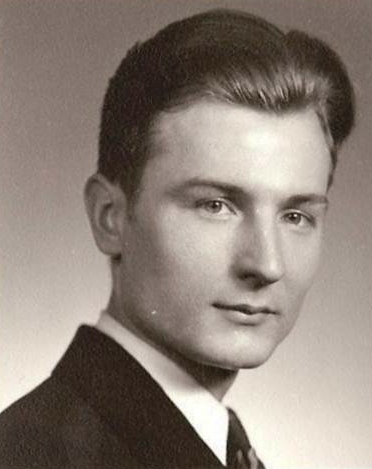
GRAAS, John. (Dubuque, IA, Mar. 14, 1917--Van Nuys, CA, Apr. 13, 1962). Graas was christened John Jacob Graas, Jr. His parents' names were Susan Marie APEL (Birch-second husband) and his father was John Jacob Graas, Sr. His father was born in Luxembourg, as well as his mother's parents, and they emigrated to the United States before settling in Dubuque, Iowa. His mother was a very talented pianist and had perfect pitch. His brother was Vincent GRAAS.
In 1931 Graas' parents gave their son a French horn while he was a student at JEFFERSON JUNIOR HIGH SCHOOL and played in the band and orchestra. His musical gift on the instrument appeared quickly. In 1932 at DUBUQUE SENIOR HIGH SCHOOL, he placed first in an elimination contest of musicians and finished third in the state district meet. In 1933 he took first in the district tournament and finished second in the state finals. In 1934, Graas won state and national honors as a French horn musician. He was the only entry in the French horn event to win superior rating.
Upon his graduation in 1934, Graas joined the National Musical Ensemble of Minneapolis, Minnesota. In 1935--1936 he joined another touring group, a concert band led by the noted cornet virtuoso and conductor, Bohumir Kryl. Graas returned home in time to play with the Cadet band in their preparation for the Chicago music festival and made the trip with them. Graas received invitations to play with the Houston symphony, the Miami, Florida municipal band, and an offer to be the assistant band director at the University of Nebraska. He turned them down in hopes of becoming a conductor of a major symphony.
Graas was impressed with the University of Missouri at Columbia. He enrolled and commuted from Columbia to Chicago to study with Max Pottag of the Chicago Symphony. In June 1940 he received a scholarship to the Tanglewood Camp at the Berkshire Music Center where he played under conductor Serge Koussevitzky and studied there with Willem Valkenier, principal horn with the Boston Symphony Orchestra.
In September 1941 Graas became a member of the Mozart Festival Orchestra, conducted by Thor Johnson. The same month, he received notice of a scholarship to the Julliard School of Music, but a month later turned down the offer to perform as first horn with the Indianapolis Symphony. After one year, he left the orchestra because he was not playing as much as he wanted. Around that time he married Jane Neal, a harp student at Stephens College in Columbia, Missouri.
Graas left classical music for a brief time in May 1942, when he became a member of the Claude Thornhill cool bop big band. He recorded several songs featuring him, including "Buster's Last Stand" and "Lullaby in the Rain" before returning to Tanglewood under Koussevitsky.
He signed a contract in June of 1942 to play principal horn with the Rochester Civic Orchestra to begin in September of 1942. Just before leaving for Rochester, however, he was drafted into the Army in August.
In the military, Graas spent the most of his time with the 145th Army Ground Forces Band in Virginia. He also saw training at the Army Music School, Fort Meyer, Florida. While there, he was one of several performers asked to perform at the White House for President and Mrs. Franklin D. Roosevelt. Graas played a French horn solo and sang in the school chorus.
Graas expanded his musical background with composing, arranging, and conducting. His earliest known arrangement was "Atlantic Zephyrs" for solo horn with military band accompaniment. His earliest works reflect the influence of Kryl's cornet virtuoso playing. At Camp Pickett, Graas studied improvisation. He graduated as Band Leader from the U.S. Army Music School and finished out service in the Army Air Corps. Graas gained the respect of his fellow servicemen for his playing and musicality and worked with Lloyd Otto, another French horn player at Keesler Air Force Base. It was during his military life that Graas developed his love of jazz.
After his military discharge, Graas became a member of the Mark Warnow band, playing at the Capitol Theater in New York City. He also played with the NBC Studio Orchestra, the Lucky Strike Hit Parade Band, and the Hall of Fame Band conducted by Paul Whiteman. He frequently heard Charlie Parker and Dizzy Gillespie play bebop at Minton's Playhouse and began to study with Lennie Tristano (listed in Leonard Feather's book Encyclopedia of Jazz).
Graas performed with the Rochester (NY) Symphony and the Radio City Music Hall Orchestra. In June 1945 he was offered a contract with the Cleveland Orchestra with Erich Leinsdorf. This was to be his last symphony job. He had problems there matching tone with James Stagliano and felt too controlled by Leinsdorf and wanted more freedom of musical expression. He felt that only playing and improvising jazz would give him freedom.
In 1947 Graas became a member of the Glenn Miller-Tex Beneke swing band. There he became friends with trombonist Paul Tanner. During recording sessions, Graas' accuracy was so great that some of the band offered to buy him drinks if and when he missed a note. Although his friends tried to get him to miss (more money for a longer recording session), Graas did not cooperate.
Graas grew frustrated with a lack of solo work and left in 1949 to become part of Stan Kenton's "Innovations in Modern Music" orchestra. With Kenton, Graas would hit high "E" entrance notes night after night, never missing. Kenton featured John on a track entitled "John Graas." In 1951 and 1952 he played in Carnegie Hall before moving to California for work in films and television.
On the West Coast, he became friends with Shorty Rogers with whom he studied. Rogers suggested he start studying with Rogers' teacher, Dr. Wesley LaViolette. Graas did do that and felt he learned about musical form from LaViolette, even though LaViolette did not teach jazz per se. Graas began to do a lot of work with recording studios, working with Shorty, Louis Bellson, and Gerry Mulligan.
Graas began to record his own original compositions and arrangements on the Decca records "Jazz Lab" series. One of the first of these was his "Trends in Jazz" album. In the early 1950s, Graas played with the Liberace TV Orchestra for one year. The famed pianist referred to Graas as "the greatest French horn player in the world." When the show was canceled, he stayed with the orchestra conducted by George Liberace. Graas scored some of Liberace's movie "Sincerely Yours" in 1955. During the 1950s, Graas appeared in various jazz polls and often won top honors.
After the Liberace orchestra, Graas returned to a busy work schedule in film and recording studios. He worked on the movie Dementia with music written by George Antheil and arranged by Shorty, Private Hell 35, with music by Leith Stevens, and did some recording for the The Wild One. In 1954 he wrote the television score for Keep the Peace. This was scored for horn and guitar and recorded by Graas and Laurindo Almeida. Graas recorded Henry Mancini music for Peter Gunn and Mr. Lucky and worked with such vocalists as Frank Sinatra and June Christy. He recorded "Jazz Symphony No. 1" with the German Festival Symphony Orchestra and "Jazz Chaconne No. 1" with the West Coast All Star Ninetet. On the Mercury record label, he produced "Coup de Graas."
John Graas, in two ways, was involved in the formation of the famous "Chico Hamilton Quintet" in 1955. He recommended the guitarist Jim Hall to Chico for the group. Secondly, Chico wanted Graas to play French horn, but since Graas was not available, Chico asked Fred Katz, cellist, instead.
Between 1955 and 1961, Graas received honors from Metronome, Down Beat, and the Playboy magazine All-Star polls. One of Graas' greatest honors was to receive a commission by the Cincinnati Symphony Orchestra conducted by Thor Johnson to write a symphony for the 1956 Popular Music Festival. Although he did not complete the work in time, the Radio Stuttgart Orchestra performed the symphony in October 1956. At that point a fight began over publishing rights between the German publisher and the Cincinnati Symphony. The work was performed by the Beverly Hills Symphony Orchestra with Herbert Weiskopf conductor, Graas on jazz horn, Paul Horn, Bud Shank, Dave Madden, Bill Green, Paul Moer, and Buddy Clark.
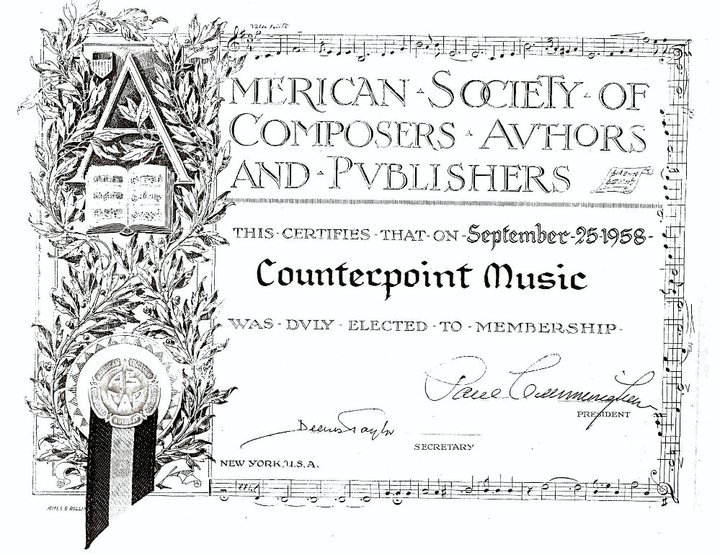
The use of European classical forms as taught by Dr. LaViolette and the style of West Coast cool jazz were the two important factors that influenced Graas' compositions. Henry Mancini felt Graas was a pioneer in the application of French horn to jazz and felt his music and playing had a probing quality. Graas wrote about his composing in an October 1957 issue of Jazz Today. He said he would write only what he could honestly hear, that form was very important to him, and that jazz was ready for a linear concept and perhaps the beginnings of atonality. He incorporated Tristano's concepts of cool jazz into the West Coast style. The Chaconne in C Major, which he revised wrote in 1950 and revised in 1955 and expanded. On the Jazz Studio 3 and 4 LP, "Mulliganesque" and "Rogeresque" were written in honor of Gerry Mulligan and Shorty Rogers.
By 1958 Graas' contributions to music were well known. In that year, the New England Conservatory of Music presented a program of jazz compositions which included some of his works. The same year, he was elected to the American Society of Composers, Authors and Publishers (ASCAP). In demand as a performer, Graas began working with Universal Studios, where he was first horn, and studied and later taught jazz arranging at Westlake College in Los Angeles, California. He marched with the Top Hatters for the Rose Bowl Parade and was a member of the LA Horn Club.
When Graas was found dead in 1962, he was slumped over the horn he loved so much, apparently of a heart attack. He was survived by his wife and two sons and is buried in Arlington Cemetery.
In 1987 the Dubuque Musicians Association inducted Graas into their Hall of Fame.
The following YouTube clips were furnished by Susan Graas McKeever. Each features John Graas right at the beginning:
1. Concerto in b flat minor by Tchaikovsky https://youtu.be/M05jf2Rb2HM?t=1m26s
2. https://youtu.be/QXuH4IcbAXQ?t=5m42s
3. "Alouette", a popular French-Canadian children's song https://youtu.be/k961PvXcvkA?t=1m52s
4. Liberace Rachmaninoff Rhapsody on a Theme of Paganini 18th https://youtu.be/XZ6IW3vX3ZQ?t=3m28s
5. Forest Murmurs https://youtu.be/O3i9VnBYTL0?t=2m17s
6. Typewriter Song, Back Row, far right - J.G. https://youtu.be/ANaL80AsKVM?t=32s
7. Camptown Races right out the gate: https://youtu.be/SUOG6iwhQnY?t=1m14s
8. John Graas in a rare movie appearance - "Sincerely Yours" he is in the middle playing percussion https://youtu.be/eSx3g7blINg?t=7m6s
| <flashmp3>http://www.encyclopediadubuque.org/audio/Rogeresque.mp3</flashmp3> | "Rogeresque" from the CD Jazzmantics by John Graas (Lone Hill Jazz, 2004). Used with permission of the John Graas family. |
For other John Graas music:
John Graas-Mulliganesque https://www.youtube.com/watch?v=uXAPzazTNsc
http://www.youtube.com/watch?v=meu9ZMH9eE8 Walkin Shoes
http://youtu.be/Rx2-_4iS_pk Gerry Mulligan Tentet
http://wn.com/%22john_graas%22
http://youtu.be/t0-oYE3t_b0 (Radio Interview) Discussion of the technique John used for playing jazz on the French horn.
http://youtu.be/btgM-D5tTDc (Radio Interview)
http://youtu.be/b_kv9vyEm4w Shorty Rogers - Blues Express – John Graas on French horn, along with Shorty Rogers, Conte Candoli, Pete Candoli, Harry Edison and Maynard Ferguson on trumpets; Bob Enevoldsen, Milt Bernhard, Frank Rosolino and George Roberts on trombones; Paul Sarmento on tuba; Charlie Mariano and Art Pepper on altos, Bill Holman and Jack Montrose on tenors; Jimmy Giuffre on baritone sax, Lou Levy piano, Ralph Pena bass and Stan Levey on drums.
http://youtu.be/FPf_TFeG-W8 Shorty Rogers – Coop de Graas: This is a rollicking duet for Bob Cooper's tenor sax and the French horn of John Graas.
https://www.youtube.com/results?search_query=john+graas&search_sort=video_date_uploaded&page=1 Mood Indigo; After Hours; Blue Flame; Misty; The Beat; Alright, OK, You Win
---
Sources:
We are indebted for this information supplied by Susan Marie Graas McKeever. Bibliography: Doctoral dissertation on "John Graas" by Verle Ormsby, Jr. and numerous other sources.
Telegraph Herald, January 12, 1936, p. 1
Telegraph Herald, Mar. 26, 1987, p. 9
Telegraph Herald, June 24, 1945, p. 13
Telegraph Herald, Apr. 16, 1944
Telegraph Herald, May 27, 1934, p. 19


